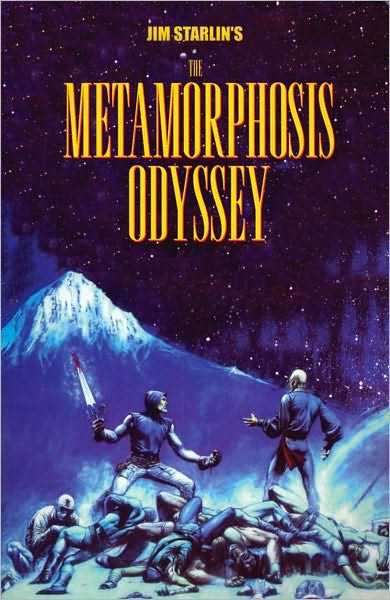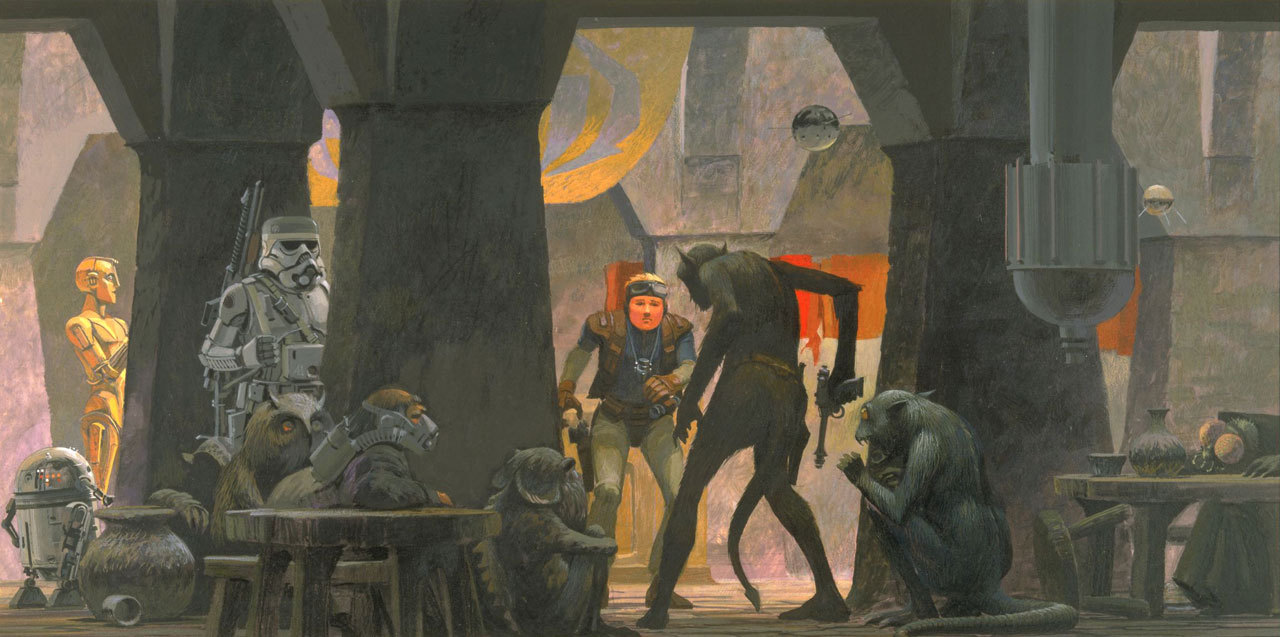As the Republic spread throughout the galaxy, encompassing over a million worlds, the GREAT SENATE grew to such overwhelming proportions that it no longer responded to the needs of its citizens. After a series of assassinations and elaborately rigged elections, the Great Senate became secretly controlled by the Power and Transport guilds. When the Jedi discovered the conspiracy and attempted to purge the Senate, they were denounced as traitors. Several Jedi allowed themselves to be tried and executed, but most of them fled into the Outland systems and tried to tell people of the conspiracy. But the elders chose to remain behind, and the Great Senate diverted them by creating civil disorder. The Senate secretly instigated race wars, and aided anti-government terrorists. They slowed down the system of justice, which caused the crime rate to rise to the point where a totally controlled and oppressive police state was welcomed by the systems. The Empire was born.
- Adventures of the Starkiller (2nd Draft), George Lucas
This sort of thing isn't really new. It shows up in earlier drafts of Lucas' Star Wars script:and of course, political maneuvers and the fate of the Republic are at the heart of the prequel trilogy. But it could be emphasized more and handled better.
The idea, in brief: Take the political maneuvering, grittiness, and shades of gray of these latter-day Star Wars works but strip the mythos back to the earliest stages, maybe taking inspiration from the best of everything that came after.
The jedi would still be fairly central to the whole thing, but as a sort of Lensmen or Green Lantern Corps adhering to a philosophy generally based around nonaction and stillness, they are ill-equipped to deal with a failing, corrupt Republic. This leads to fracturing and internal conflict. The separatists have a point, but separatism is also a way for megacorporations and commercial concerns to gain power and freedom from governmental restraint.
I suppose Palpatine is still a Sith lord, but if the conflict were ever just with him, the problem could be solved. The real danger is the systematic issues for which the Empire is a seductive solution.
A couple of things I would change that aren't essential to the premise, but I might as well change them while I'm changing stuff. The Clone Wars are a series of conficts fought with clones, but that's not why they are called that. Rather, the ethical issue raised by the clones' existence and the appearance of government cover-up are the "straw that breaks the tauntauns back" for many. The clones' conscription is an act of desperation on the part of the Republic. Or cynical maneuvering by a Sith Lord.
While I'm at it, I would certainly ignore things that definitively position droids as sophont or sentient beings such as Jabba's use of torture and the ridiculous droid bar from Mandalorian. I think the possibility that droids are fully sophont should exist--and the people of the Republic are generally blind to it--but they shouldn't be treating them as if they already know they are.
As an aside, I think the origins of droids and clones can easily point to the Republic being a purposely limited technological region not unlike the Empire in Dune or in the Sun Eater series. Canon sort of supports this by the droid foundries of Genosis or the Kamino clone facilities as being on the periphery of galactic civilization. I would suspect must of the high tech industry is on the Rim where the restrictions of the Republic are weaker.












































